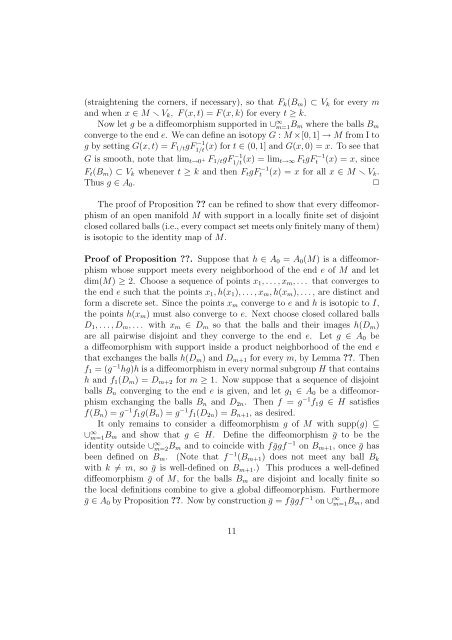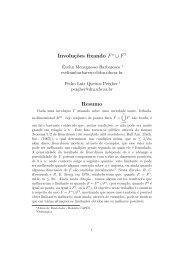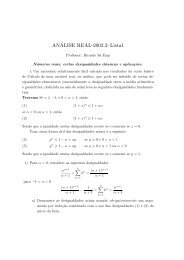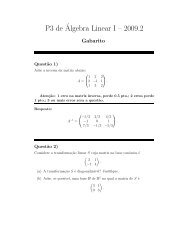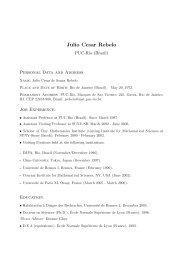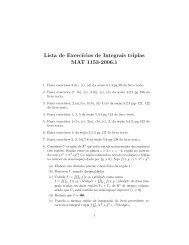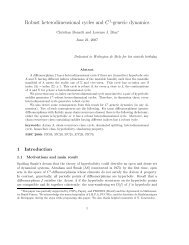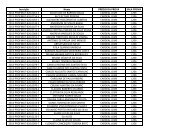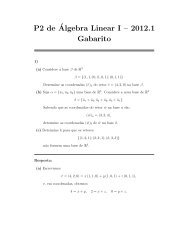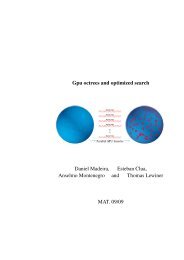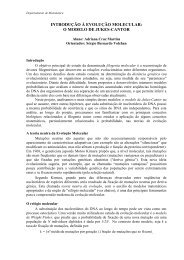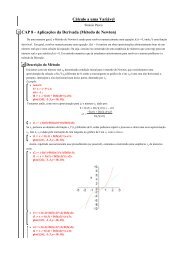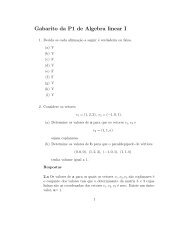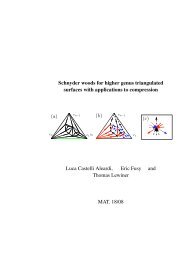NORMAL SUBGROUPS OF DIFFEOMORPHISM AND ...
NORMAL SUBGROUPS OF DIFFEOMORPHISM AND ...
NORMAL SUBGROUPS OF DIFFEOMORPHISM AND ...
You also want an ePaper? Increase the reach of your titles
YUMPU automatically turns print PDFs into web optimized ePapers that Google loves.
(straightening the corners, if necessary), so that F k (B m ) ⊂ V k for every m<br />
and when x ∈ M V k , F (x, t) = F (x, k) for every t ≥ k.<br />
Now let g be a diffeomorphism supported in ∪ ∞ m=1B m where the balls B m<br />
converge to the end e. We can define an isotopy G : M ×[0, 1] → M from I to<br />
g by setting G(x, t) = F 1/t gF −1<br />
1/t<br />
(x) for t ∈ (0, 1] and G(x, 0) = x. To see that<br />
G is smooth, note that lim t→0 + F 1/t gF −1<br />
1/t (x) = lim t→∞ F t gFt<br />
−1 (x) = x, since<br />
F t (B m ) ⊂ V k whenever t ≥ k and then F t gFt −1 (x) = x for all x ∈ M V k .<br />
Thus g ∈ A 0 .<br />
✷<br />
The proof of Proposition ?? can be refined to show that every diffeomorphism<br />
of an open manifold M with support in a locally finite set of disjoint<br />
closed collared balls (i.e., every compact set meets only finitely many of them)<br />
is isotopic to the identity map of M.<br />
Proof of Proposition ??. Suppose that h ∈ A 0 = A 0 (M) is a diffeomorphism<br />
whose support meets every neighborhood of the end e of M and let<br />
dim(M) ≥ 2. Choose a sequence of points x 1 , . . . , x m , . . . that converges to<br />
the end e such that the points x 1 , h(x 1 ), . . . , x m , h(x m ), . . . , are distinct and<br />
form a discrete set. Since the points x m converge to e and h is isotopic to I,<br />
the points h(x m ) must also converge to e. Next choose closed collared balls<br />
D 1 , . . . , D m , . . . with x m ∈ D m so that the balls and their images h(D m )<br />
are all pairwise disjoint and they converge to the end e. Let g ∈ A 0 be<br />
a diffeomorphism with support inside a product neighborhood of the end e<br />
that exchanges the balls h(D m ) and D m+1 for every m, by Lemma ??. Then<br />
f 1 = (g −1 hg)h is a diffeomorphism in every normal subgroup H that contains<br />
h and f 1 (D m ) = D m+2 for m ≥ 1. Now suppose that a sequence of disjoint<br />
balls B n converging to the end e is given, and let g 1 ∈ A 0 be a diffeomorphism<br />
exchanging the balls B n and D 2n . Then f = g −1 f 1 g ∈ H satisfies<br />
f(B n ) = g −1 f 1 g(B n ) = g −1 f 1 (D 2n ) = B n+1 , as desired.<br />
It only remains to consider a diffeomorphism g of M with supp(g) ⊆<br />
∪ ∞ m=1B m and show that g ∈ H. Define the diffeomorphism ḡ to be the<br />
identity outside ∪ ∞ m=2B m and to coincide with fḡgf −1 on B m+1 , once ḡ has<br />
been defined on B m . (Note that f −1 (B m+1 ) does not meet any ball B k<br />
with k ≠ m, so ḡ is well-defined on B m+1 .) This produces a well-defined<br />
diffeomorphism ḡ of M, for the balls B m are disjoint and locally finite so<br />
the local definitions combine to give a global diffeomorphism. Furthermore<br />
ḡ ∈ A 0 by Proposition ??. Now by construction ḡ = fḡgf −1 on ∪ ∞ m=1B m , and<br />
11


